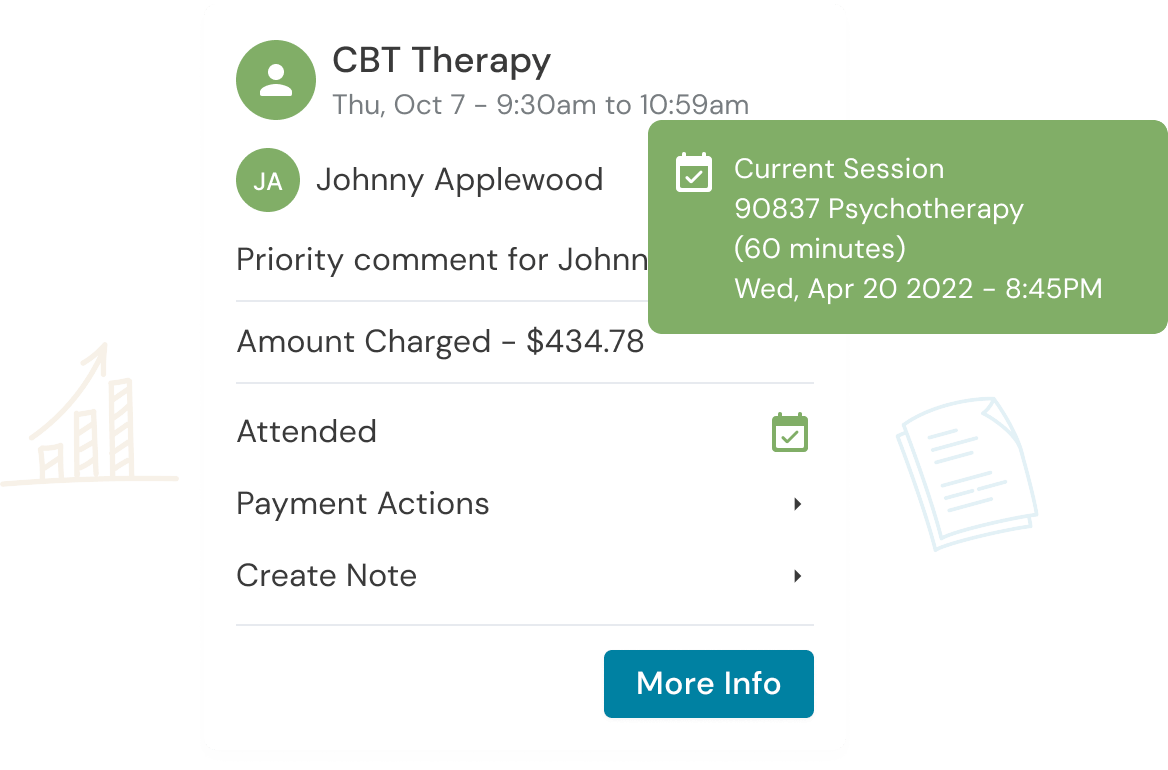The work of therapists who identify as Black, Indigenous, and Persons of Color (BIPOC) is vital: shared identity is one of the most prioritized factors in seeking a therapist for people of color. However, Black therapists account for only 5% of the psychology workforce, and this calls for non-Black therapists and particularly White therapists, who make up 83% of psychologists, to be knowledgeable, capable, and compassionate when it comes to talking about race in therapy.
We’ve heard from therapists across the country who are looking to further their knowledge on race and anti-racist practices, so to encourage this development, we interviewed both White and BIPOC therapists who have sought advanced training in racial identity on ways therapists can create a safe and knowledgeable space for Black clients.

1. Commit to an ongoing practice of readings and trainings
The first step to address racism as a therapist is to commit to the ongoing work of addressing personal biases. Combating racism goes beyond the desire to believe that you are not racist – it requires the humility, time, and commitment of energy and resources to pursue trainings, actively identify personal biases, and understand how your own social positionings may impact dynamics within therapy.
“It’s an ethical demand of our profession to examine biases that impact our work,” says Aaron Skinner-Spain, a licensed clinical social worker and the owner of NYC Affirmative Psychotherapy, which specializes in serving queer communities of color. “As folks in America, there is no place that race and racism do not touch in our society, so it has an impact on us all. For my White colleagues in allyship, this work entails rendering their invisible white privilege visible.”
Mizuho Kanazawa, a licensed creative arts therapist in Brooklyn who specializes in interracial couples counseling and culturally sensitive counseling, agrees: “We must do personal work on our own biases and have intimate and hard conversations,” she says. “Regardless of whether our practice focuses on cultural sensitivity or not, we as mental health practitioners must know the history of this country, the effect it has on mental health, and the daily microaggressions that people of color experience.”
Fortunately, there are many great resources on anti-racism, Whiteness, and race and identity in the therapy space. Depending on your preferred method of learning, you may consider: books and articles, podcasts, documentaries, online trainings, supervision, peer consultation, anti-racist groups, and workshops.
Below are a few resources recommended by therapists and our team members:
Books and articles on race, privilege, and trauma in therapy
- Using Race and Culture in Counseling and Psychotherapy: Theory and Process, by Janet E. Helms, PhD
- A Race Is a Nice Thing to Have: A Guide to Being a White Person or Understanding the White Persons in Your Life, by Janet E. Helms, PhD
- My Grandmother’s Hands: Radicalized Trauma and the Pathway to Mending Our Hearts and Bodies, by Resmaa Menakem, LCSW
- Whiteness Matters: Exploring White Privilege, Color Blindness and Racism in Psychotherapy (article), by Margaret Clausen, PsyD
Pre-recorded online courses and podcasts
- Racialized Trauma – A free, 5-part e-course by Resmaa Menakem, LCSW
- Healing Racial Trauma – A podcast episode by the American Association for Marriage and Family Therapy, featuring Christiana Awosan, LMFT, PhD. Available on iTunes, Spotify, and Stitcher.
- Effects of Racism on Mental health – A free webinar on the negative impact of racism on mental health symptoms for people of color.
- Seeing White – A podcast from Scene on Radio Podcast exploring what it means to be White. Available on iTunes and Spotify.
Live online trainings
- White People Confronting Racism Online – A three-day online workshop by Training for Change for white people who want to challenge racism around them. Held July 17-19, 2020.
- Loving While Black – An online workshop by Racine R. Henry, PhD, LMFT on treating couples of African descent. Held on July 24th, 2020.
2. Focus your learnings outside the therapy space, not in your interaction with clients
Self-education is crucial so that the therapy can focus on the client’s healing, not on the therapist’s racial identity development.
“I find it important not to conflate therapists’ ignorance or denial of systems of oppression and privilege with learning about clients’ unique set of cultural experiences,” says Dr. Stephanie Thrower, a psychologist in Boston whose research focuses on racially responsive supervision and training. “When we as White therapists ask our clients to teach us about the experiences of being oppressed through racism, we are ultimately focused on ourselves and our own emotional experience.”
Instead, Dr. Thrower recommends doing the personal work outside of the therapy space, and recognize when therapists’ racial identity leads to difficulty empathizing with clients’ experiences.
“The process of learning about systems of oppression is best done in a context where we are not responsible for someone’s healing, such as reading, watching videos, and talking with peers and mentors.”
Dr. Thrower also suggests building a personalized plan: “Clinicians would benefit from developing an individualized continued education learning plan with multiple modalities in order to learn about systems of oppression as well as cultural norms, both inside and outside of our own experiences.”
3. Get curious about a client’s unique experiences, rather than stereotyping
If you’re curious about a client’s background, should you do outside research or ask the client directly?
Dr. Sunitha Chandy, a psychologist in Chicago who is dedicated to maintaining an inclusive practice, warns against making assumptions about a client’s background based on research about their race or ethnicity.
“Statistics tell you about the group but they don’t give you great information on one person,” Dr. Chandy says. “You have no idea when they are in the norm or an outlier. How do you know if your research is based on stereotypes or facts?”
She shares ways in which this applies to her own personal life: “I know that my experience and response to being an Indian woman are uniquely different from many Indian women and has changed over time and situation. There are ways our experiences overlap and ways they diverge.”
For Black clients, this type of assumption can often manifest in patronizing ways as well; for example, common microaggressions include assuming Black clients grew up poor or being surprised by their professional achievements. Studies illustrate that these negative stereotypes led to “feelings of mistrust and undermined the therapist’s credibility.”
At the same time, Dr. Chandy also strongly believes that the burden of teaching should never be placed on the client.
“Often when we ask our clients to educate us about culture it is more about us than it is about them,” she says. “It makes them feel like the other when they’ve come to therapy to be seen and work towards their goals.”
Instead, Dr. Chandy recommends seeing each client as unique people embedded within their communities, and focusing on the client’s unique responses, thoughts, and emotions related to these experiences.
“I want to walk with my clients as they grow in their understanding of their experience. I work to not only learn about how they see themselves and their communities, but also how they see the places where they feel tension and connection in those relationships.”
She shares the following metaphor: “If fish were therapists, it would feel awkward and near impossible to explain to them what air is. What they would need to do is learn about experiences in the air and observe how being in air changes our movements and interactions.”
Here are some questions Dr. Chandy asks to get curious with clients:
- How did that feel?
- What were you thinking?
- What was this like for you?
- How did your family and/or community respond?
- How did that impact you?
- What did this mean for you?

Engage Your Clients.
4. Become aware of ways in which you may be committing microaggressions
Dr. Melba Sullivan, a psychologist in New York City who provides training on diverse, equitable, and inclusive practices in therapy, explains that some of the common mistakes that White therapists can make in seeing Black clients include “committing microaggressions, gaslighting, lacking curiosity, and/or engaging from a paternalistic or patronizing stance.”
Microaggressions are subtle intentional or unintentional slights that can denigrate or degrade individuals of color. Consider these microaggressions that may arise in the therapy space:
- Not responding to client referrals and inquiries based on their demographics (studies that point to this)
- Misdiagnoses due to unconscious racial biases (studies that point to this)
- Taking a “color blind” approach
- Asking the client to explain their culture to the therapist so that they “get” the context
Gaslighting is the act of questioning and dismissing clients’ experiences. Consider these examples in the therapy space:
- Questioning whether experiences that clients feel are related to their racial identities were actually racially driven
- Questioning a client’s desire for a therapist who shares their racial background
It’s important to be keenly aware of the potential for acts of microaggression and gaslighting. Workshops and supervision can help increase awareness and avoid these actions in your work with clients.
5. Validate the impact of race and racial trauma
Racial colorblindness as applied to therapy is the idea that therapists see all clients equally, regardless of race, to the extent that they “don’t see color.”
Experts note that a colorblind approach may prevent therapists from noticing how race actually affects a client’s lived experiences; it allows therapists to ignore racial trauma, and/or be dismissive of a client’s reality.
Dr. Sullivan explains, “Therapists commonly question and dismiss experiences that clients wonder or know are related to their racial identities as attributable to other dynamics.” For example, consider the following remarks that a therapist may make in sessions:
- “Are you sure it’s because you’re Black that that happened? What are some other possibilities?”
- “I don’t see you as Black. I see you as a human being.”
- “Aren’t you putting politics over friendships?”
- “Maybe if you just teach your boys to comply with the police, they’ll be fine.”
Instead, Dr. Sullivan recommends “acknowledging the pain and possibility that race mattered in the interaction.”
Validate the client’s interpretation of the situation, and recognize and consider the depth to which racism is embedded in the structure of our society. Here are some ways to start:
- Identify racism and any anti-Blackness that clients experienced as a form of racial trauma
- Recognize the gravity of each of these experiences
- Validate their reactions, for example, by saying: “That’s a very understandable response and reaction to racism.”
- Acknowledge that working through the pain of those experiences is a critical part of healing
- Teach self-compassion techniques to to deal with the stress, anxiety, and emotional toll of interpersonal and structural racism
6. Acknowledge difference and openly express your commitment to inclusivity
If you are seeing a Black client and feel or are told you aren’t fully understanding their identity or culturally-driven experience, therapists agree that the best thing to do is ask and be open about it.
Skinner-Spain recommends acknowledging these differences and opening up the dialogue: “Acknowledging differences with clients can signal to them that you are not afraid to talk about race or racism and invite them into brave work with you. Race and racism are taboo subjects for most people in America, but also it’s the air we breathe. Checking-in and asking about any issues they have felt uncomfortable to talk about in the work can be a way to deepen it.”
Eliza Jaquez, a licensed marriage and family therapist in New York City, agrees: “Ask clients how they would feel about having a conversation with you, a non-Black therapist, about their experiences with race,” says Jaquez. “Let clients know that the therapeutic space aims to be an inclusive one where every topic can be brought into the room – this includes race.”
7. Use self-disclosure mindfully as a tool to bridge perceived social distances
Self-disclosure on the part of the therapist needs to be approached with care, but multiple studies demonstrate the profound influence that White therapists’ self-disclosures can have to make clients of color feel equal and respected.
Self-disclosures may include sharing factual personal information such as your family life, which can make the client feel a stronger sense of trust and openness, or more generally sharing your genuine reactions to the client’s experiences of racism and oppression, which can help the client feel understood.
The studies found that instances in which self-disclosure were not beneficial were when they increased or emphasized the cultural and social distance between the therapist and client.
Consider if self-disclosure may be an appropriate tool for you to draw upon commonalities, and if relevant, introduce it to build a stronger bond and trust with your clients.
8. Respect Black clients’ desires to see a therapist that shares their identity
As with any therapeutic relationship, if the client feels it’s not a good fit or they want your help in finding a different therapist, make sure to respect the client’s choice.
Dr. Sullivan explains that too often, therapists “question and dismiss clients’ desire for a therapist that shares their race.”
To understand the perspective that clients may be coming from, here are some articles in which clients of color explain their reasons for seeking a provider who shares their racial or ethnic background:
- Why I’ll Be Choosing My Next Therapist by Race
- Why I Need a Woman of Color Therapist
- Why I Left My White Therapist
To help clients find Black therapists, you can refer to Zencare’s Black Therapist Directory, Therapy For Black Girls, Black Female Therapists, and BEAM.
9. Seek supervision and consultation
Supervision, peer consultation, and personal therapy can especially be helpful in identifying biases, bringing awareness to countertransference, and developing comfort in talking about race or differences in race.
As Skinner-Spain explains, “When we take up the courageous and ethical work of examining ourselves as therapists, it helps us to spot with more clarity issues of our own countertransference impacting the work.”
Many therapists who specialize in diversity and inclusion also offer formal supervision. Even if you’ve been in private practice for many years, supervision can be a useful tool to bring greater awareness to countertransference and ensure you are growing professionally as a therapist.
Here are some therapists who offer in-person and remote supervision on social-cultural issues, such as race, class, gender, and inclusion:
- Christiana Ibilola Awosan, LMFT, PhD (New York City)
- Melba Sullivan, PhD (New York City)
- William James Jones, PhD (Los Angeles)
- Aaron Skinner-Spain, LCSW (New York City)
- Sunitha Chandy, PhD (Chicago)
- Stephanie Thrower, PhD (Chicago)
- Nina Miller, PhD (New York City)
If you are asking a Black or POC colleague for their knowledge, be mindful of your ask.
Dr. Sullivan shares: “It’s important for white therapists to commit to an ongoing personal practice of identifying and working through implicit bias with other white people, and not expect their Black therapist friends to do it for free.”
Especially if your colleagues offer supervision on this topic for a fee already, consider if formally asking for their time might be the more respectful path.
If formal supervision isn’t the right path for you at this time, you can also do a lot of the work in peer consultation with White colleagues, for example, by discussing articles or books each week.
10. Recognize this is hard, ongoing work – and keep at it!
Dr. David Dove, a psychologist in Providence, urges clinicians not to get discouraged: “As hard as it is to hear a client say ‘you just don’t understand me,’ continuing to invest the time and energy into understanding their own privilege and experiences can help non-POC therapists and how they provide treatment.”
Nikole Barnes, a licensed clinical social worker in Providence, agrees: ”I think that admitting we don’t have all the answers as therapists is important for our clients, regardless of race, sexual orientation or gender identity. We must use that therapeutic alliance to discuss the tough issues, and go home and continue working on ourselves.”
White racial development is a practice, as Dr. Margaret M. Clausen, a clinical psychologist in Berkeley, California, explains in this piece on Whiteness, Privilege, and Color Blindness: “Our privilege as white folks is that we can dip in and out of this work, and we can choose what aspects in which we want to participate… I do this at times even while intending to further my awareness practices… I think of white racial development as a practice for this reason, and one that involves further dialogue with other white therapists, and ongoing education along the same lines.”
The work of awakening to our privileges and biases, understanding systems of oppression, and creating a safe and understanding space for clients is hard, daily, and ongoing work. It can bring up guilt, shame, and defensiveness. Practice self-compassion and patience, lean into the tension, and as Dr. Chandy put it, “move through it towards connection and engagement” with clients.



